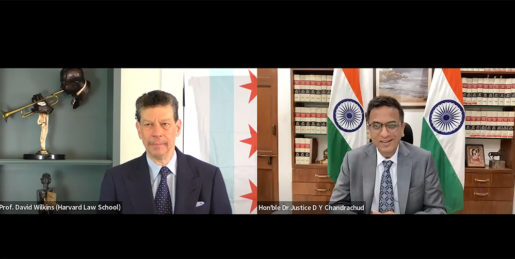In the Approaching Lawyer Well-Being issue of The Practice, we explored mental health issues in the corporate legal profession. As Kieran McEvoy, Louise Mallinder, and Anna Bryson emphasize in their book Lawyers in Conflict and Transition, mental health issues—in particular, burnout—can be particularly acute in lawyers working in conflict situations. In addition to experiencing an often seemingly endless grind of cases, policy work, and advocacy, lawyers working during conflict are often witness to trauma and atrocities, as well as experience threats to their own safety. This is most striking in the section of the book devoted to gender, where female cause lawyers faced, in addition to the above challenges, microaggressions, sexism, and discrimination. “The price to be paid for working on the front line of politically sensitive legal cases in contexts of authoritarianism or conflict was undoubtedly high,” the co-authors write, highlighting the impact on family life and the high incidence of divorce in the profession. As one activist from South Africa says, “I think the amount you had to put in, you know, and it wasn’t just time. You had to put yourself in and the implication of that on family and that were quite high.”
In “Trauma, Depression, and Burnout in the Human Rights Field: Identifying Barriers and Pathways to Resilient Advocacy” (Columbia Human Rights Law Review, 2018), frequent collaborators Sarah Knuckey, Margaret Satterthwaite, and Adam Brown pick up on this general theme, exploring the mental health landscape for human rights advocates—many of whom are lawyers. In one international survey of human rights advocates, they found that nearly 20 percent of participants showed diagnosable PTSD, nearly another 20 percent met the criteria for burnout, and just less than 15 percent had diagnosable depression. Perhaps more alarmingly, Knuckey, Brown, and Satterthwaite found that “large majorities of survey participants had accessed little to no counseling (83%), received little to no education in the potential emotional impacts of human rights work (62%), and reported little to no mental health support from their employers or schools (75%).” In short, these advocates were often left without sources of support.
In a more recent 2020 article, “Posttraumatic Stress Symptoms and Access to Services Among Human Rights Advocates: The Mediating Roles of Organizational Encouragement of Support Seeking and Occupation-Related Appraisals” (Psychological Services), Satterthwaite, Knuckey, and Brown, joined by co-authors, extend their previous work assessing the severity of PTSD in human rights advocates. To do so, they surveyed 346 individuals recruited from organizations like Amnesty International, Human Rights Watch, and the U.N. Office of the High Commissioner for Human Rights. In addition to grappling with the levels of PTSD in the participants, the study also asked them to describe participant access to psychological support and to appraise their perspective on human rights work and their organizational culture. “The apparent prevalence of PTSD within human rights organizations indicates a need for organizations to provide more trainings and support around mental health concerns,” the authors write. Such attention would not fully eliminate trauma, but interventions like “peer-to-peer support” could not only help mitigate the adverse effects of the work but also be conducive to reforming a negative perception of culture within certain organizations.
Both articles are part of a wider literature produced by frequent collaborators Satterthewaite, Knuckey, and Brown, who are widely known for their influential work on human rights measurements and indicators and mental health in the field.



